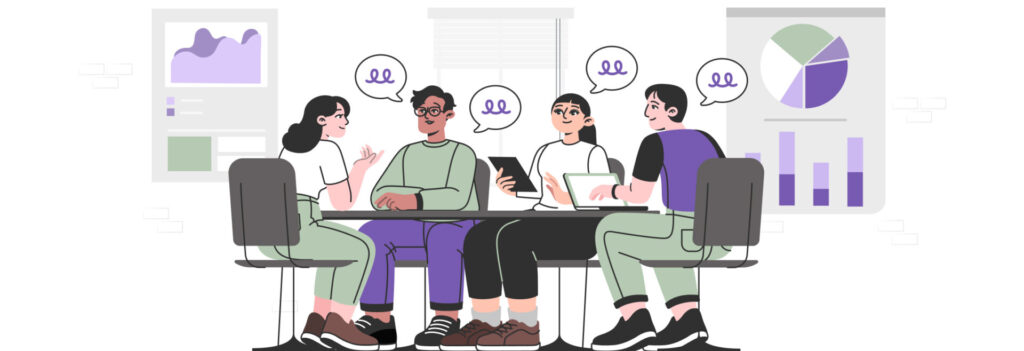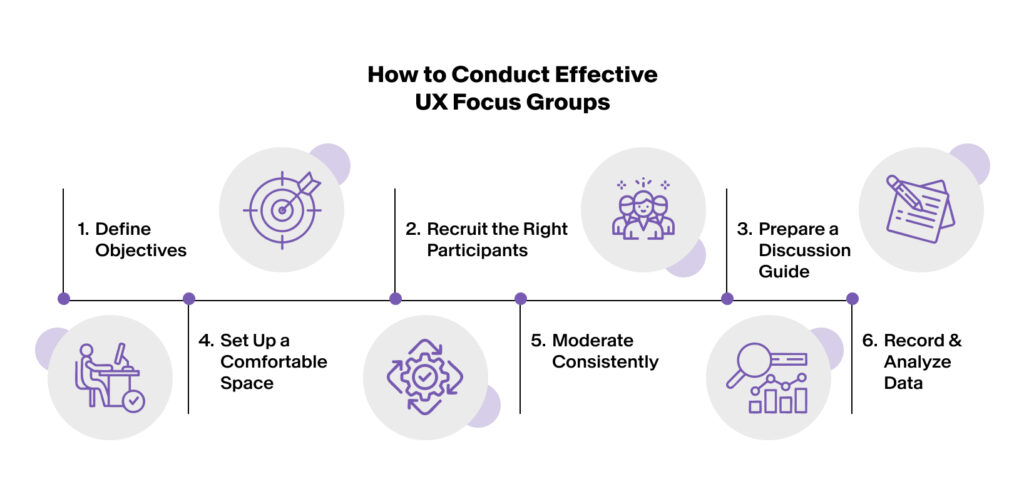Understanding users is paramount when designing globally accessible, intuitive products. Gaining valuable insights from user behaviors, triggers, and requirements helps create designs that resonate with the target audience. One method that has stood the test of time, as part of the UX design process, is UX focus groups—a qualitative data collection technique that brings users (that closely resemble the target user personas) together in a group setting to share their thoughts, opinions, and experiences when interacting with similar digital products or facing a particular problem that you’re trying to solve.
In this blog, we explore how focus groups work and how they can help user researchers turn real-time user feedback into actionable design improvements.
Stuti Mazumdar - February 2025

What Are UX Focus Groups?
Focus groups are structured sessions where a moderator, often a user researcher, leads a discussion with a small group of users to explore every aspect of their behaviors, perspectives, and reactions to a product or a theoretical concept. Unlike user interviews that are conducted one-on-one, focus groups leverage group dynamics allowing all research participants to interact with one another to generate diverse viewpoints, and enable user researchers to understand user interactions in a collaborative setting.
The primary goal of these focus groups is to uncover qualitative data about how users interact with products, highlighting pain points, and identifying opportunities for design success.
Why Choose Focus Groups When Conducting UX Research?
While usability testing and user interviews are common methods for gathering insights into your target audience, focus groups offer the following distinct advantages:
1. Insights in Group Settings
Group settings allow participants to build on each other’s ideas during a session, breathing new perspectives into the discussion that might not emerge in individual interviews. Observing users interact in real time while they complete a task or traverse a user journey can reveal valuable nuances in user behavior.
2. Cost & Time Efficiency
Conducting focus groups often requires less time and resources than conducting numerous one-on-one interviews. It saves your bandwidth and can be performed with a considerably smaller team size.
3. Exploration of Broad Topics
The key to ensuring that you make the most of focus groups is to ask open-ended questions and not leading ones. This encourages participants to share their experiences and opinions, providing a holistic understanding of the target audience’s needs.
The Role of Focus Groups in the UX Design Process

Successfully conducting focus groups requires careful planning and execution on the researchers’ end in a design team. Here’s how you can get started:
1. Define Objectives
Clearly outline the aim of this research. Do you wish to validate a prototype? Or receive feedback on a newly developed feature? Or are you exploring user behaviors or identifying usability issues? Specific objectives such as these guide the discussion and ensure you get relevant insights.
2. Recruit the Right Participants
Select participants who represent your target audience. Ensure diversity within the group to capture a range of perspectives and encourage a striking exchange of opinions.
3. Prepare a Discussion Guide
Craft open-ended questions to steer the conversation while leaving room for spontaneous insights. Some examples of open-ended questions are “Can you describe how you currently solve this problem using the XYZ app?” or “What features would make this product critical for you?”
4. Set Up a Comfortable Space
A relaxed group setting encourages participants to share their honest opinions. Ensure you foster an inclusive atmosphere where everyone feels heard, getting equal time to discuss their user experience.
5. Moderate Consistently
A moderator’s role is crucial in balancing the discussion. Ensure that user researchers avoid letting dominant participants overshadow others, and ensure quieter members have the opportunity to contribute. They also ensure that participants don’t dwell on a particular question for a long time and keep moving on to the next critical question.
6. Record and Analyze Data
Record each session to capture every little detail—from verbal responses to non-verbal cues from the users. Analyze the qualitative data to identify common themes, pain points, and actionable insights.



